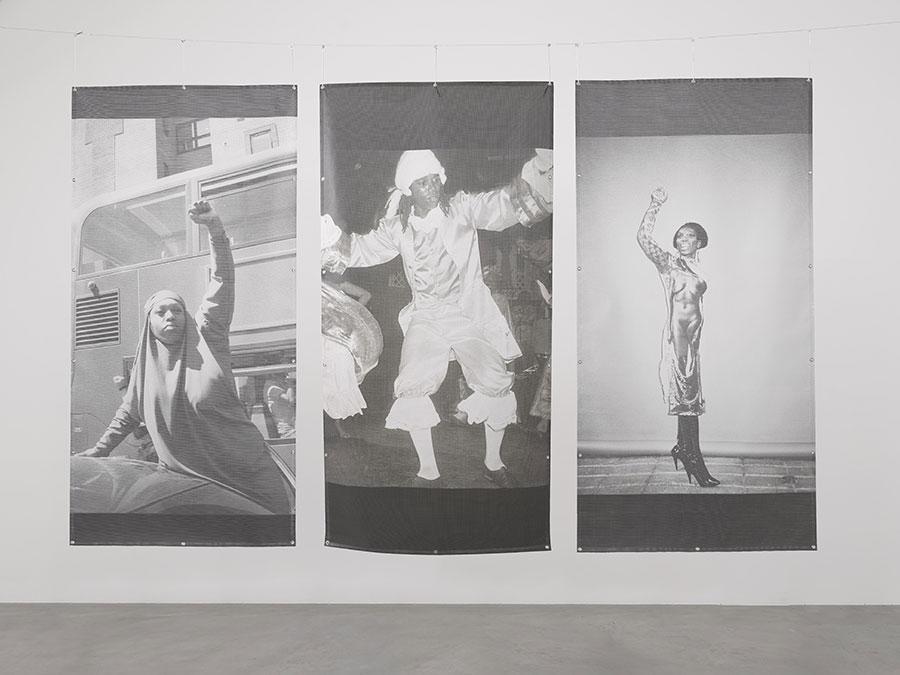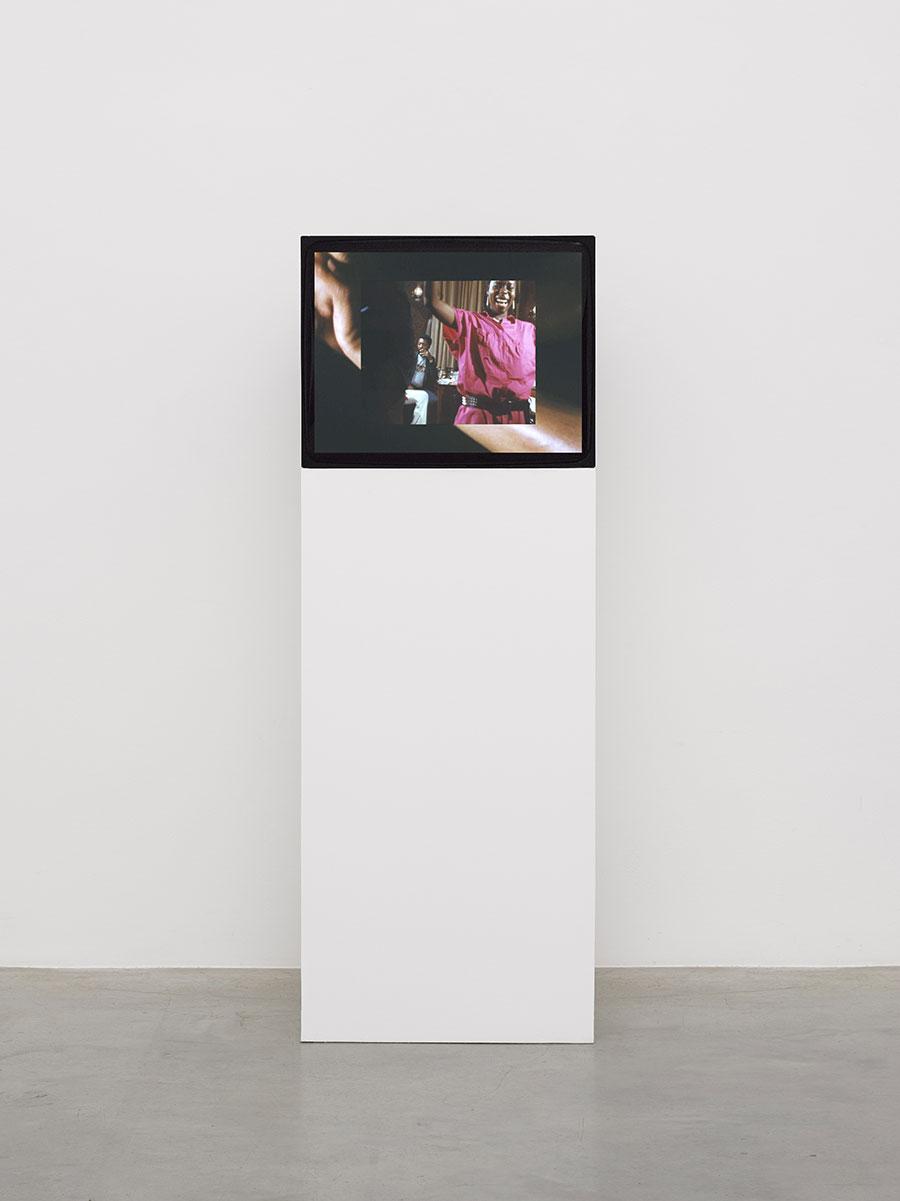‘An Infinity of Traces’ Turns Ordinary People into Heroic Figures
Curated by Ekow Eshun, an exhibition of work by 11 Black artists at Lisson Gallery traces colonial histories alongside collective healing practices
Curated by Ekow Eshun, an exhibition of work by 11 Black artists at Lisson Gallery traces colonial histories alongside collective healing practices

Greeting visitors from the back wall of Lisson Gallery’s current group show, ‘An Infinity of Traces’, is Liz Johnson Artur’s Spring ... Times (2020), which feels like an exercise in mythmaking. The Ghanaian-Russian photographer presents three photoprint banners, with a single figure the focus of each: in the first, a young woman raises her fist in solidarity; in the middle, a man dances, dressed like a pirate; and, on the right, a glamorous woman in PVC boots and a dress printed with a full-frontal nude holds an arm aloft. Any initial incongruity between the three images is diminished not just by their equal size and greyscale colouring but by their suspension from the ceiling, compelling our gaze upwards and conferring on each a dignified grandeur of the kind that turns ordinary people into heroic figures.

Curated by Ekow Eshun, the show exhibits work by 11 Black artists exploring history, Blackness and belonging across a range of forms, from photography to audio-visual installation. Taking its title from a passage in Antoni Gramsci’s Prison Notebooks (1929–35) – in which the Italian philosopher discusses knowing oneself as ‘a product of the historical processes to date, which has deposited in you an infinity of traces’ – the exhibition looks, in part, at the traces that emerge before and after colonialism. This idea of ‘infinity’ permits an exploration of myriad kinds of Blackness in a culture that often rushes to pin down and box in subjects it erroneously feels it fully grasps. In this context, the concept of ‘traces’ holds a fascinating tension. The word denotes the persistent presence of something mostly removed; here, that persistence is double-edged, exhibiting itself simultaneously as the defiant survival of things almost obliterated by systemic oppression, and also as a reminder of the far-reaching consequences of history for those that would rather forget.

One of the most impressive works is Alberta Whittle’s between a whisper and a cry (2019), a 40-minute film presented in the darkened space of the gallery’s basement that connects colonialism’s long-reaching legacy with one of the most pressing issues of our era: climate change. Plastic chairs, the kind you’d see at a family barbecue, are lined up in front of the screen but, winding between them, large, rusted chains evoke the ships that carried ‘human cargo’ to colonial settlements between the 17th and 19th centuries. In a film that touches on the effects on unseen forces, one of the most affecting instances occurs when dancer Divine Tasinda – dressed in a mock sailor suit, brow shiny with sweat – performs to Sun Ra’s ‘Enlightenment’ (1959) in Glasgow’s Gallery of Modern Art, once one of the many homes belonging to tobacco and sugar plantation owner, William Cunninghame, built with profits from enslaved labour. Tasinda’s dance is one of defiance and seduction; her direct gaze feels accusatory, giving no quarter.

Dance is a common thread connecting several of the works. Evan Ifekoya’s video, Disco Breakdown (2014), depicts the artist dancing enthusiastically interspersed with found footage from the Prelinger Archives – an extensive collection of home movies and amateur films – creating a lo-fi, DIY music video of sorts. ‘I want to be dancing at the discotheque,’ Ifekoya repeats like a mantra, as though the expression alone might be enough to manifest the wish. Later, taking their desire into their own hands, Ifekoya appears to create their own disco ball by cutting up a mirrored surface. Ufuoma Essi’s Bodies in Dissent (2020) also combines archival documentation with Super 8 film clips of dancing: by splicing shots of performer Nambi Kiyira in Lewisham, southeast London, with fragments sourced from BFI Archives and the Black Journal, Essi turns the moving body into a site of both commemoration and resistance. With these works, ‘An Infinity of Traces’ not only explores the effects of oppressive forces, but also the communities and healing practices that developed (and continue to develop) in response to Britain’s legacy of hostility towards Black presence.
'An Infinity of Traces' is on view at Lisson Gallery, London, until 5 June.
Main image: Evan Ifekoya, Disco Breakdown, 2014, video still. © Evan Ifekoya; courtesy: the artist and Lisson Gallery, London
























